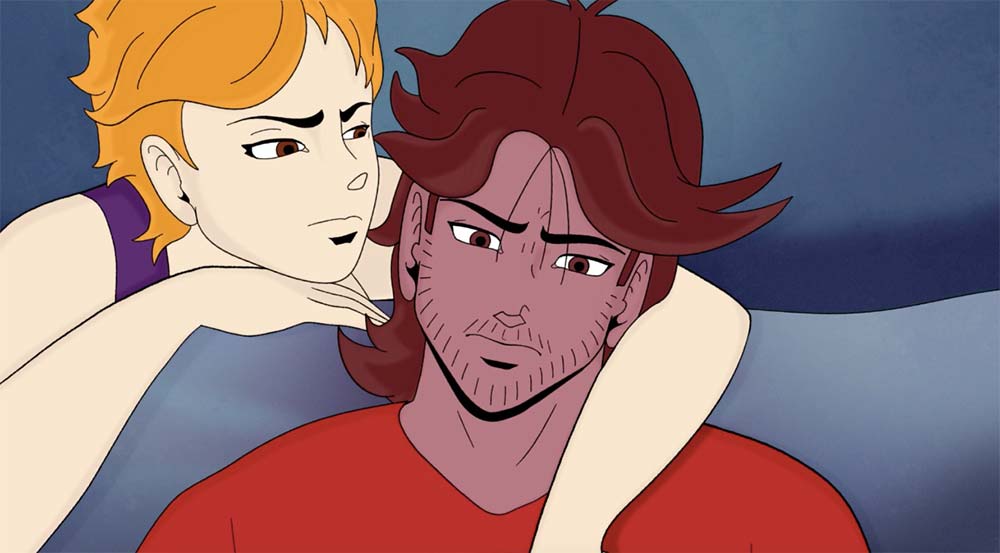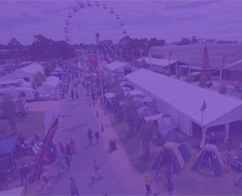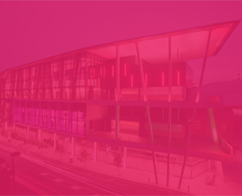
Adelaide
Oct 31 - Nov 2, 2025
Adelaide Showground



Already an award-winning title, upcoming Australian animated series Zero-Point is set to blow audiences away upon its release.
Zero-Point follows an Indigenous superhero whose mission it is to uncover a vast government conspiracy; a story told through a unique animation style and from a team that loves the genre.
With Supanova 2018 – Brisbane set to host an exclusive screening of the series’ first two episodes, followed by a panel and signing, we caught up with its creator, co-writer and director Jonathon Saunders.
Firstly, congratulations on winning Best Animation at the Capricornia Film Awards! How does that feel?
Feels great! It’s good to get recognition for the hard work that everyone put in for Zero-Point; especially on my home turf.
We haven’t really seen anything like Zero-Point on our screens before – how would you describe the story to people?
It’s a superhero action thriller. After thwarting a terrorist threat at an Australia Day celebration, Kyle (Zero-Point) begins to uncover evidence of a government conspiracy regarding a classified post-human program and the origin of superpowers in Australia. Then, while confronting the ultra-nationalist terrorist known as Samson, Kyle discovers more about the mysterious death of his father, the original Zero-Point.
 Where did the inspiration for Zero-Point come from?
Where did the inspiration for Zero-Point come from?
The inspiration of Zero-Point is varied and wide; it draws its inspiration from art, comics, anime, manga, film, novels and video games. But the character first took form during my University days at Charles Darwin University, studying a bachelor of fine arts.
I came across pictures of Richard Bell’s Made Men series; where he parodied Roy Lichtenstein’s famous pieces by inserting his Aboriginal artist “Richie” persona into them. I thought it was pretty cool seeing that classic ‘60s comic book style with an Indigenous lead, and started to think about creating my own character and stories that were a love letter to the things I enjoyed.
Like many Australian kids, I grew up reading The Phantom, Footrot Flats and MAD Magazine; it wasn’t until I was a teen that I read superhero comics. Frank Miller and Alan Moore’s works being the most influential, especially Moore’s Miracleman and Miller’s Batman: Year One. It was also around my teen years that anime had its ‘Golden Age’ in the late ‘90s/early ’00s.
While the Dragon Ball influence on Zero-Point is quite clear, I was also influenced by the works of Mamoru Oshii, Hideaki Anno and Hiroyuki Okiura. With Zero-Point, a lot of the influences and inspirations were from what I enjoyed during my formative years, watching and reading stories about heroes who go through tremendous physical and psychological struggles to save the day, at a great cost. Stories that dig deep into the Monomyth and the human condition, while also giving us insight to understand ourselves.
Tell us about the unique animation style…
 That came about due to budget reasons! Initially I wanted the series to have that classic ‘80s Japanese OVA (Original Video Animation) look with three to five tone shading, where everything was bathed in moody pools of light with detailed background plates, but when animation director, Guy Jamieson, and I looked at the budget, there was no way we could do that level of production on top of animating the series frame by frame.
That came about due to budget reasons! Initially I wanted the series to have that classic ‘80s Japanese OVA (Original Video Animation) look with three to five tone shading, where everything was bathed in moody pools of light with detailed background plates, but when animation director, Guy Jamieson, and I looked at the budget, there was no way we could do that level of production on top of animating the series frame by frame.
So it was then that we went with a more stylised, comic book look with thick outlines, minimal shading and vibrant unusual colour pallets for the background that referenced the kind of colour schemes found in old comics, referencing John Higgins’ work in Watchmen and the colour work of Hirohiko Araki in Jojo’s Bizarre Adventure. What was a hindrance regarding budget helped give the series a kind of fresh, pop art look.
How important is having an Indigenous superhero as the lead?
I think it’s important. Especially Indigenous superheroes that don’t fall back on the headband, body paint wearing ‘Dreaming powers’ stereotypes. Having cool, interesting superheroes that just happen to be Aboriginal, and not just an ‘Aboriginal superhero’. Representation and diversity in media is important, but too often it is used as a gimmick or to check a box instead of writing engaging characters, or using a characters diversity to explore a theme or idea.
What did Mark Coles Smith bring to the role of Zero-Point?
Mark was great! He really understood the character of Kyle Burton (Zero-Point). He brought a nice balance of gentleness, underlined with gruffness to the role. He understood that Zero-Point is a cool, serious guy with a short fuse and a tender heart — the loner who longs to belong. But there is also a bit of cheekiness to him, which Mark did wonderfully in episode one.
How has living in Darwin influenced you?
I guess it influenced me due to it’s laid back ‘she’ll be right’ nature. Being able to mull over and think about things at my own pace and not rushing to compete in the rat race has helped me re-examine and re-work key ideas.
Darwin’s remoteness also plays a part, when I visit the major cities down south, they still seem amazing and exciting, fueling my imagination. That’s not to say the outback doesn’t do that too.
 What trend have you noticed in Australian animation in recent years?
What trend have you noticed in Australian animation in recent years?
I’ve noticed that Australian animators are really kicking it out of the park when it comes to 2D action animation. I noticed this back a few years ago with Planet 55’s Prisoner Zero (no connection to Zero-Point) and the amazing animation work that was done then for action scenes and fight choreography.
Now Rise of the Teenage Mutant Ninja Turtles is pushing the envelope of TV action animation, Australia animators are being noticed for creating sequences that can stand alongside the best Japanese ‘sakuga’.
Is there anything else you’d like to add?
I think we’re gonna see a very interesting future for 2D animation with more and more streaming services willing to fund exclusive content, and with creative membership platforms like Patreon allowing animation aficionado’s to directly finance creators. 2D animation in the west might still be a while off returning to the silver screen, but it will reign king on the small screen.
Fans will be able to get further insight into the exciting project with Saunders, voice actor Steven Oliver, producer Meredith Garlick and more on the ground in Brisbane.






